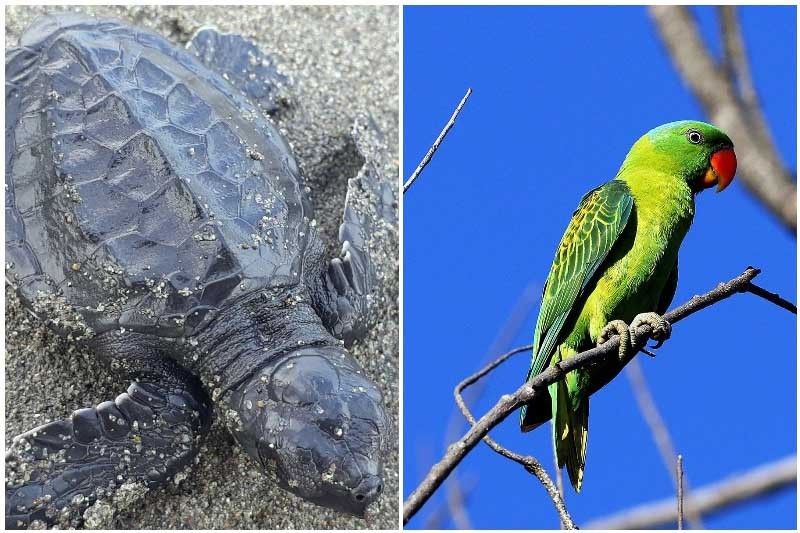How much pawikans and blue-naped parrots contribute to the environment, tourism

MANILA, Philippines — What is the value of a lovely blue-naped parrot? What about the economic benefits of marine turtles, which play an integral role in coastal ecosystems?
The Biodiversity Management Bureau, an attached agency of the Department of Environmental and Natural Resources, sought to answer these questions by conducting an economic valuation study of the two threatened species.
The study, which was conducted with the Asian Development Bank, aims to bring greater attention and appreciation to the economic benefits of wildlife conservation in the Philippines.
According to the study, one marine turtle or pawikan is estimated to have an economic use value of P4.8 million throughout its 57-year lifetime.
This is based on the ecological role of pawikan in coastal and marine ecosystems (P900,000 per turtle) and its tourism value (P3.9 million per turtle).
Marine turtles help maintain the health of coral reefs and seagrass beds. Scuba diving activities are also attributable to the presence of pawikan in an area.
In the Philippines, hawksbill turtle and leatherback turtle are classified as critically endangered, while loggerhead turtle, green turtle and olive ridley turtles are endangered.
Value of 'pikoy'
Throughout its six-year lifetime, a blue-naped parrot or pikoy is projected to have an economic use value of P186,000, the study also showed.
The computation is based on the trade and tourism value of a pikoy (P5,000) and its role as a contributor in the creation and maintenance of forest ecosystems (P181,000).
According to wildlife conservation group Katala Foundation, there are approximately 8,500 pikoys in the Philippines. Its annual use value ranged between P36.23 million and P259.19 million.
A willingness-to-pay survey was also conducted in Metro Manila and Cebu province—areas where the confiscation of illegally-traded wildlife was known to occur—to estimate the non-use value of pawikan and pikoy. The non-use value of the parrots dwarfed that of the marine turtles, generating a value of P33.38 billion compared with pawikans' P9.30 billion.
The DENR Administrative Order No. 2019-09 classified blue-naped parrots as critically endangered.
Both the marine turtles and blue-naped parrots are also listed in the Convention on International Trade in Endangered Species of Wild Fauna and Flora (CITES) Appendices and the International Union for the Conservation of Nature (IUCN) Red List of threatened species.
Long-term benefits
The Philippines is home to two-thirds of the world's biodiversity. But it is tagged as a biodiversity hotspot with at least 700 threatened species.
Wildlife trafficking and illegal online trade also thrive in the country.
Environmental economist Dr. Agustin Arcenas, who led the study, said the economic valuation of resource is "vital in monitoring whether steps to protect these resources are effective, as well as evaluating the efficiency of projects and programs geared toward managing the resource, especially in situations where no other feasible metric currently exists."
DENR Secretary Roy Cimatu expresed hope that more Filipinos will think about the long-term benefits of marine turtles and blue-naped parrots, not just short-time gains by publicizing the findings.
- Latest
- Trending






























